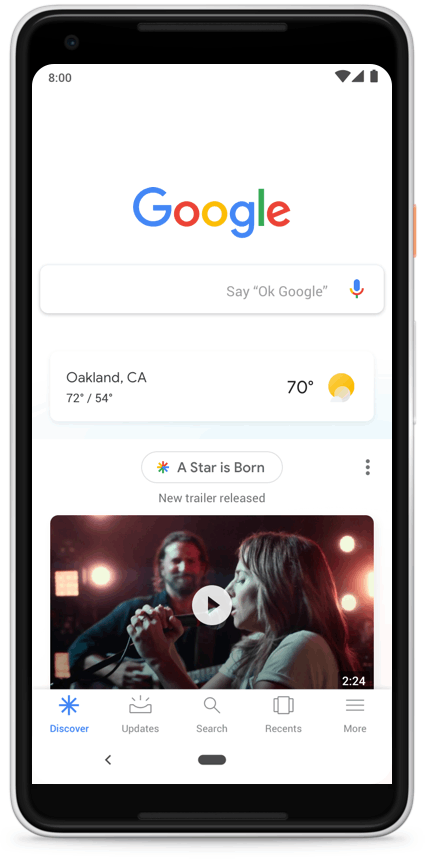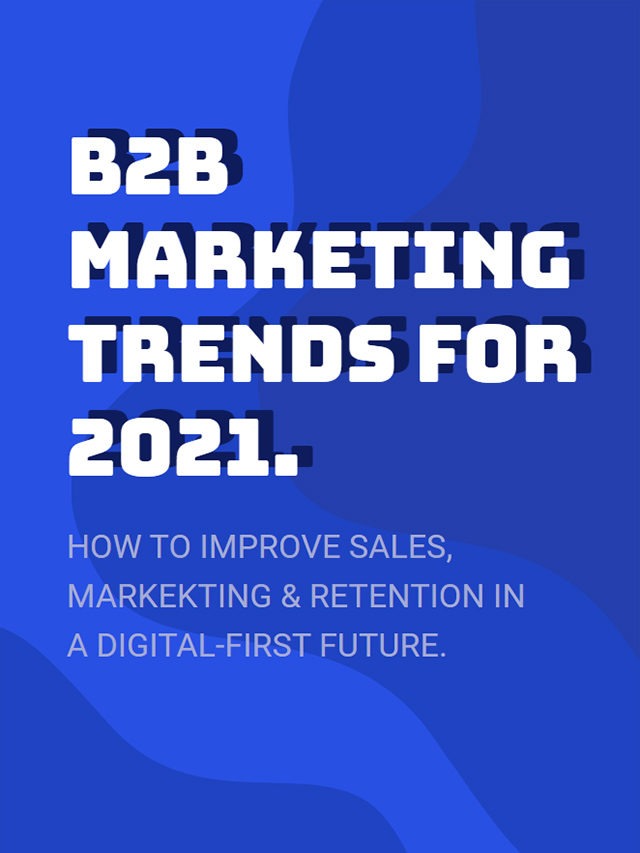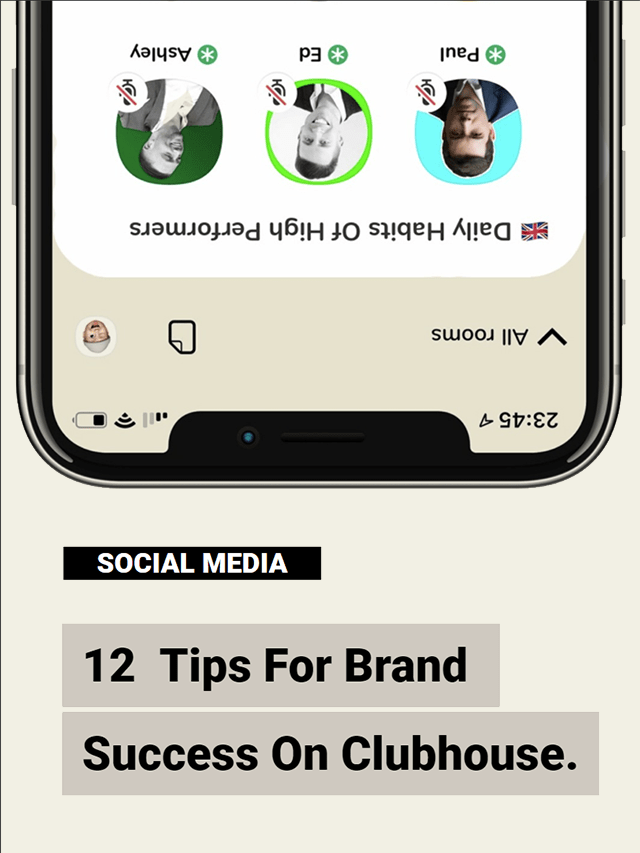Designed for busy people craving mental ‘snacks’, fast-loading Google Web Stories provide innovative short-length content that is perfect to glance through during brief breaks. Blending text and images, audio, video and animation, this web-based version of the popular Stories format provides quick shots of information in an easily digestible format.
What is Google Web Stories?
Actually, Web Stories are just innovative ads for your content, running in Google Discover. And all this innovation is powered by familiar AMP technology, rebranded as Google Web Stories – and so much cooler!
Responding to the latest content consumption demands, this full-screen story format was developed by Google as a way of presenting stories on the open web. By simply tapping on a story in Google Search, users are instantly immersed in a full-screen experience.

How big is the Web Stories market?
Used by 800 million people each month, the native Google Mobile app offers access to Google Web Stories through its Discover tab. They also appear through Google Search and Google images.
Currently available in the USA, India and Brazil, Web Stories is poised to expand to other countries. With greater visibility and push through Google search platforms (still the best place for matching intent with product) cost-effective websites must inevitably include immersive Web Stories, as soon as this fast-loading format is launched in their regions.
9 Benefits of Web Stories
Although on the market for less than a year, Google Web Stories already promises countless opportunities for SEO optimization:
-
With its own dedicated carousel in Google Discover, Web Stories opens up fresh horizons for boosting organic search traffic.
-
Encouraging interactive engagement with users attracted by its tap-through format, Web Stories are endowed with bookend capacities for monetization and viral distribution, backed by analytics;
-
Fully customizable, Google Web Stories are flexible enough to tweak each pixel, ensuring seamless compliance with brand guidelines;
-
For users, screen options include clicking on links in Web Stories, and tapping left or right to navigate through to related stories from other sources;
-
Animate any element in your story, for richer user experiences and higher top-of-mind content ratings;
-
Stronger monetization capabilities through higher traffic with faster customer engagement, through an enticing CTA that invites users to visit your website;
-
Staying ahead of the competition, as it won’t be long before your competitors catch onto this innovative channel;
-
As website extensions, Web Stories can be repurposed easily: social media links, landing pages, homepages and even newsletters, with a longer reach for content;
-
You always own your Google Web Stories, controlling codes and hosting them on your own websites (in contrast to TikTok and Instagram, where content depends heavily on platform functions).

See how Transmyt can drive massive amounts of growth for your business.
-
SEO – Unlock massive amounts of traffic.
-
Content Marketing – Our team creates engaging content that will get shared + attract customers.
-
Paid Media – Effective paid strategies with clear ROI.
-
Website Development – Cutting edge technology platforms.
Breaking news! The February 2021 update (version 1.3.0) of the Web Stories WordPress plug-in includes new layouts and creative design options, with animation. It also includes page attachment support, and a form-based advertising option for easier monetization.
Crafting a Google Web Story in WordPress
A powerful but user-friendly WYSIWYG tool, the Web Stories plug-in for WordPress uses simple drag-and-drop techniques. It also offers access to the WordPress media library, making it easy to pick attention-grabbing assets straight from the plug-in dashboard.
There are two ways of getting started: downloading the Web Stories editor directly from WordPress, or installing it through the WordPress admin dashboard. Simply click on PLUGINS in the left navigation menu, followed by ADD NEW. Just type Web Stories into the search bar to find this plug-in, install and activate it – and you’re ready to craft and customize your first Web Story!
Nine SEO How-To’s for Web Stories
Early adopters of Web Stories for WordPress are still exploring all the features of this exciting new channel. So here’s a quick walk-through of what we know so far:
-
Adding metadata: easily attached to the web story through the Document tab, this can include cover images, author information, descriptions and excerpts, ensuring high search engine compatibility;
-
Adding analytics: it’s simple to set up Web Stories analytics through the Google WordPress site kit plug-in, or just key your Google Analytics ID into the Editor Settings;
-
Using clean assets: for faster loading, use clean assets with layered text elements and caption support for videos, instead of burned-in text that search engines find hard to understand;
-
Optimizing images: use optimized JPEG for images not requiring transparency, cropping them to only the visible portion, and replacing GIFs by autoplay loops;
-
Optimizing videos: encode at the highest compression with acceptable results (often at a bit rate of under 1500 kbps), trimming them to the exact length;
-
Assistive text: for easier user access to content, use the Accessibility field on the Design panel, keying in descriptions of images and entering descriptive Titles and Assistive Text in the appropriate fields;
-
Shortcuts and navigation: for faster Web Story crafting, press CTL +/ (Windows) and command ⌘ + / (Mac), or check out the editor shortcuts by clicking on the keyboard icon on the Workspace panel;
-
Search engine optimization: click on the Document tab in the Editor to generate social metadata automatically – and don’t forget to review and update publisher logos, excerpts and cover images;
-
Boosting search engine hits: after publishing, make sure that Web Stories are included in the XML sitemaps, embedding them in regular posts and articles through the Web Stories Gutenberg block.
Check out two of our own recently created Web Stories
Want more insights?
Subscribe to our weekly marketing tips and advice, delivered straight to your inbox.
Oops! We could not locate your form.
Keep Reading
Want more? Here are some other blog posts you might be interested in.
The MVP—Minimum Viable Product—has become gospel in startup circles. Build fast, test fast, fail fast. But in today’s crowded market, viability ...
The startup myth goes like this: work 20-hour days, pivot constantly, chase the high of the new. That’s what makes a ...
Most founders build their first leadership teams for speed, comfort, and alignment. Understandably, you’re strapped for time and need people who ...
For founders and growing companies
Get all the tips, stories and resources you didn’t know you needed – straight to your email!






